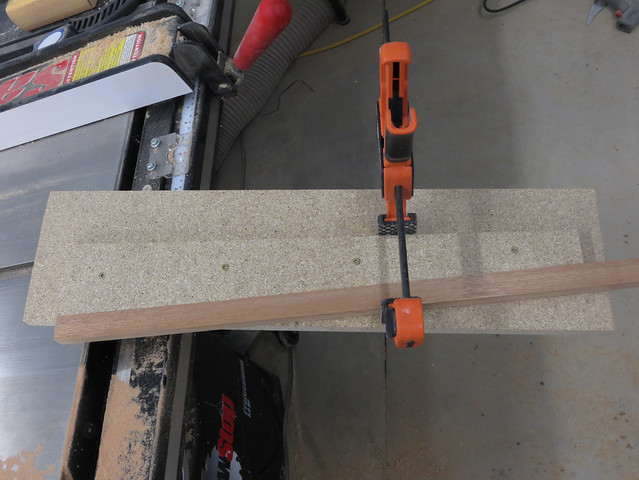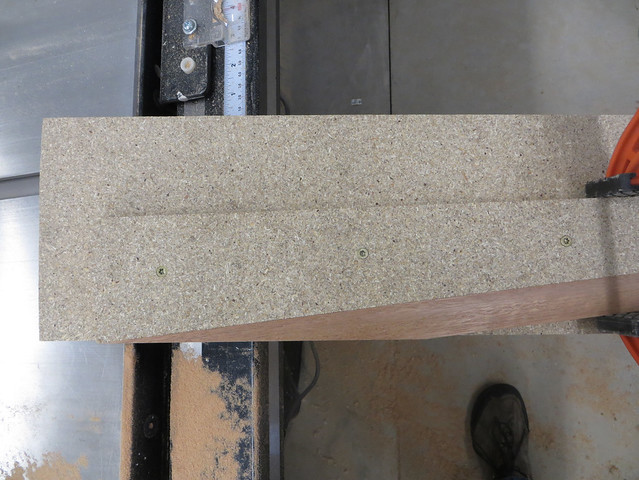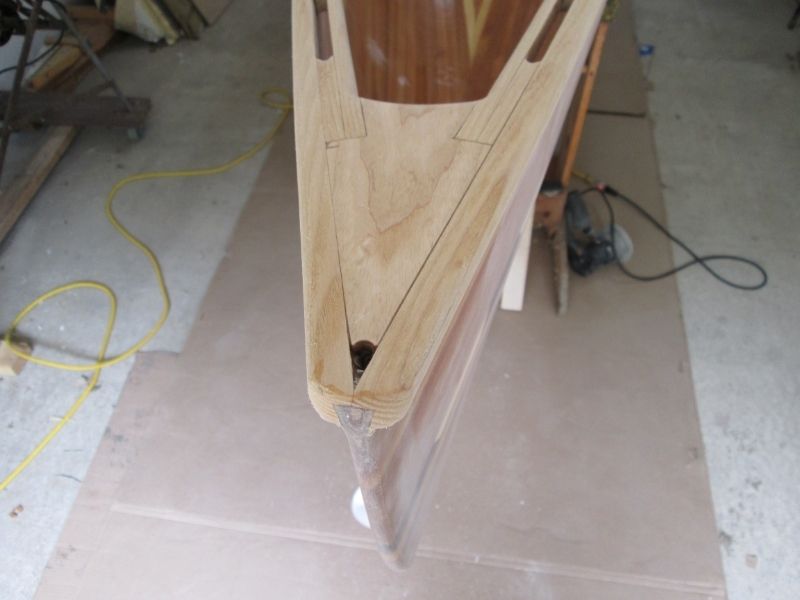I just ordered $200 of 10' white ash and need to splice a ton of ash gunnels. This will actually be my first time doing splices on my own. What is the name of the epoxy you use. I have tightbond III also.
Thanks for the answers to my previous questions.
I used RAKA epoxy for these but pretty much any epoxy should work. Tightbond III would probably work fine too but to me epoxy just seems a little more permanent. But whether or not it actually is I don't know. I'm sure tons of gunwale scarf joints have been made with wood glue. It would probably give a slightly tighter joint. I've never been able to make an invisible joint with epoxy but I can with glue. You have to worry more about excess squeeze out (don't squeeze out too much) with epoxy, or so I've been told
Do you have a jig or anything for cutting your scarf joints yet? You can make a very effective one in about 10 minutes with shop scraps. They intimidated me for a long time until I finally
had to make some. Turned out not to be a big deal.
If you're looking for ideas, or anyone else who's following along, this is what mine looks like:
 20150104_003
20150104_003 by
Alan, on Flickr
On the underside is a glued scrap of 3/4" mahogany that's a perfect fit for the slot in the top of the tablesaw:
 20150104_001
20150104_001 by
Alan, on Flickr
There's no need to get that strip glued in place perfectly square to the blade. All you do is make sure the piece of 3/4" sheet stock (particle board in my case) is oversized so that extends past the blade when it's riding through the slot. After the guide strip has been installed on the underside you just turn on the saw and run the jig through with the guide strip in the slot. The blade cuts off the extra width and you end up with everything nice and square. At this point all you have is a flat piece of 3/4" plywood that slides across the table in the slot. Now you need something to hold your board at the right angle.
What ratio do you want your scarf joints to be? Let's pick 10:1 although you can just as easily pick whatever you want. Towards the front of your jig and on the edge that's right next to the saw blade make a mark. Now measure back 10" from that mark, along that same edge and make another mark. From this 2nd mark measure
in (away from the blade) 1" and make a 3rd mark. Connect the 1st and 3rd marks with a straight edge and you have the proper angle for a 10:1 joint. For a 12:1 ratio you'd measure down 12" in the 2nd step and then still measure in 1".
Now find a scrap piece of 3/4" board and screw it down on that line. Let the front of it hang off the edge of the jig so that you slice it off flush the first time you run in through the table saw.
I've heard of people using double sided tape to hold their boards in place on the jig but I just use a couple squeeze clamps. I'm only using one in this picture but I've since graduated to using two for a firmer hold. One towards the back and one farther forward.
 20150104_004
20150104_004 by
Alan, on Flickr
As you can see the forward part of the board that's getting cut is not secured but I haven't found this to be an issue. If the board is warped then in one direction it will pull away from the fence in front of the clamps (bad). If you flip it over so the curve is running the other way it pulls itself tight against the fence (good). If the board is perfectly straight it just sits there like it's supposed to.
Here it is after running through the saw:
 20150104_005
20150104_005 by
Alan, on Flickr
Alan








